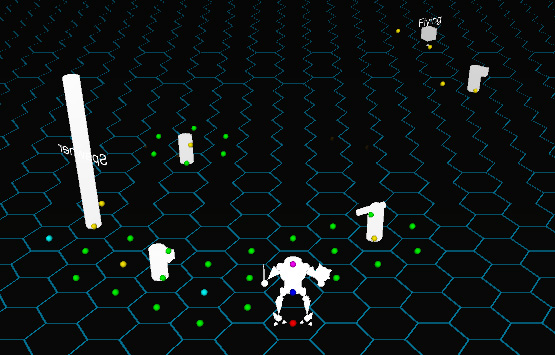I encountered a (not so) little problem. My movement algorithm seems to be highly resistant to registering collisions. I move the objects directly and so they ignore any collider in their way. To prevent this, I would have to apply forces on the objects instead, but this would nullify all benefits from the new algorithm. Also I don’t want them to stop anywhere on the map, they should stick to the grid, so they would have to know that their destination is invalid, before they start moving or – even better – before they choose a direction.
I tried creating a two-dimensional boolean array and assign true/false values to each tile on the map to test against, and it kinda works, but only with predefined tiles. Setting tiles invalid during runtime doesn’t work. Maybe I am doing it wrong.
I will try and conquer that problem later.Until I have an idea I’ll be working on other parts. Fighting, powerups, experience, some FX.











